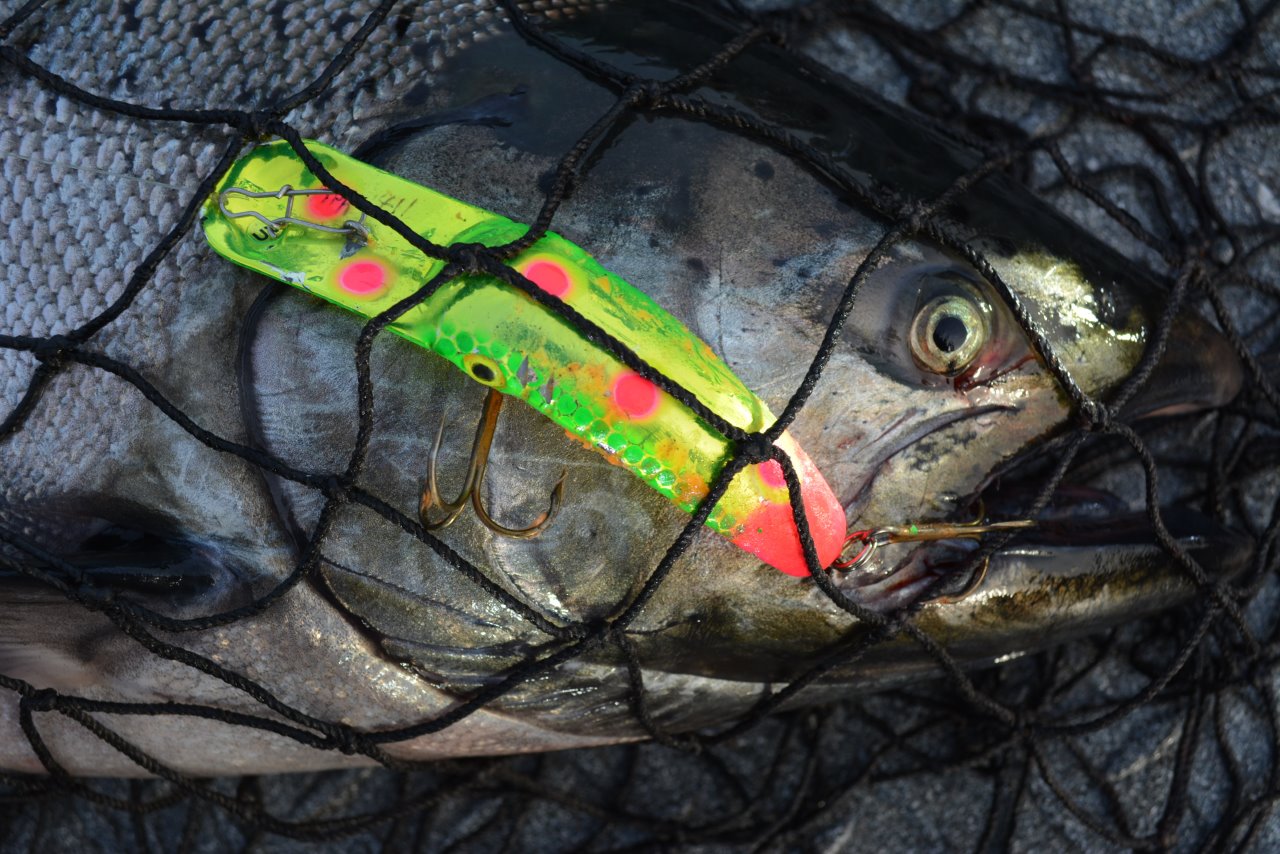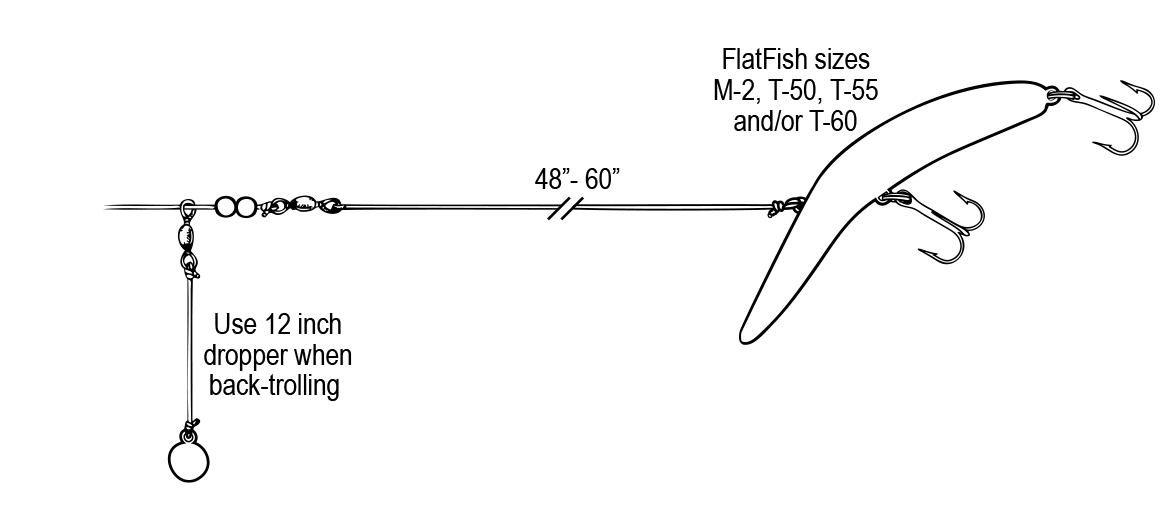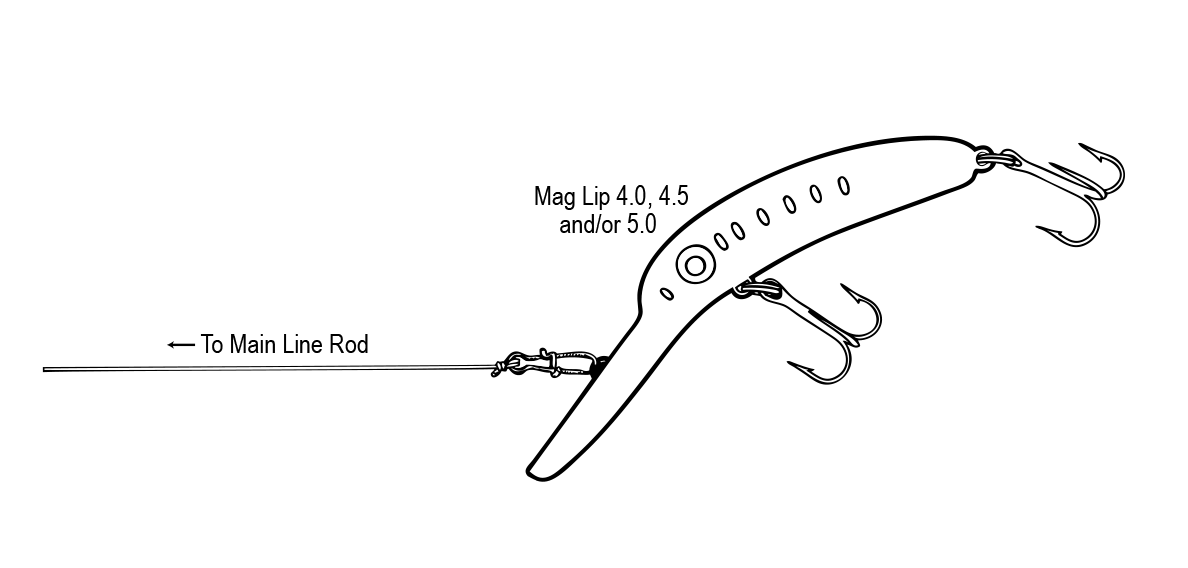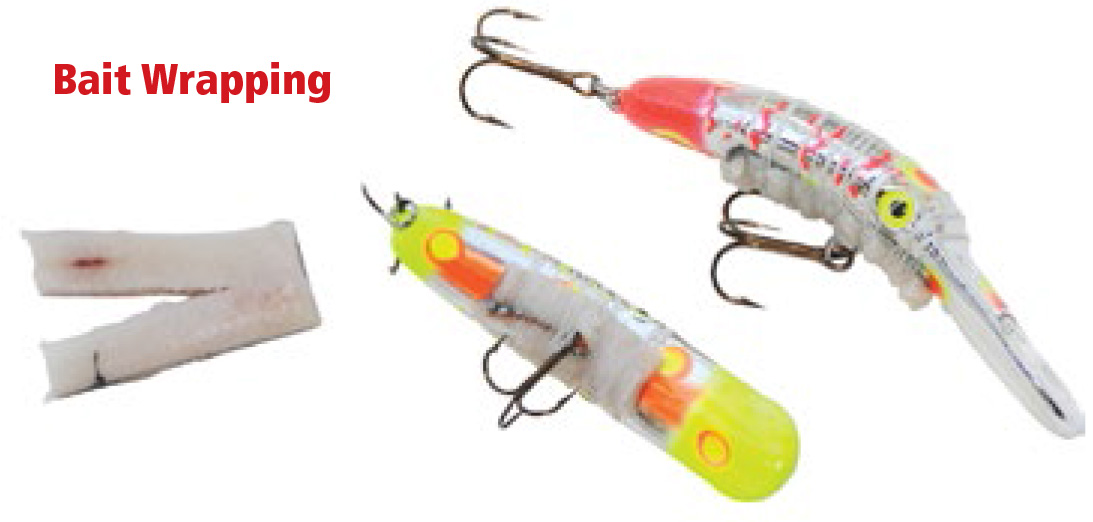Targeting River Chinook
By Buzz Ramsey
When searching for salmon in rivers, realize they prefer to hold in deeper water than do steelhead. For example, while steelhead will often hold in water less than ten feet deep, salmon will seek out water ten feet deep and deeper, if available. It’s in the deep water holes, slots, and eddies where you will find the most chinook salmon.

For boat anglers, chinook will respond to all popular fishing methods, including: back-bouncing bait, bobber fishing, diver and bait, or back-trolling plugs. The trick is to develop an understanding of the types of water each method produces best in. For example, back bouncing an egg cluster combined with a shrimp behind a big sinker might be the only method that works in a deep, roily, fast-water salmon hole where water can swirl backward. In a similar looking spot, but where the water is slow moving, it might be worthwhile to suspend your bait under a float rather than back bounce it down the middle of the hole.
In areas where the current is straight running, you can use a buoyant diver or plug (like a 4.0 or larger size Mag Lip with its hooks removed) rather than a sinker to hold your egg cluster near bottom. Rigging involves attaching a 4-to-5 foot leader to the belly eyelet of your plug and back-trolling it just like you would a plug without a leader and baited hook extending from it. This “diver n’ bait” set up works best when applied in areas having straight-running-current that will keep your diver/plug near bottom. To keep your trailing bait from hanging bottom, many anglers will place a buoyant Spin N Glo on the leader just above their bait. To ensure a good spin, a small plastic bead is placed on the leader between your Spin N Glo and hook. When employing this method, it’s important to hold your boat steady in the current when getting bit and wait until your rod tip is down and throbbing before setting-the-hook.
Back-trolling salmon size plugs is a proven method and one you should not overlook. Depth and water flow are the main factors in determining whether you fish your plug in combination with a sinker or just on a flat line (with no additional weight added). Salmon size FlatFish (meaning size M-2 and larger) are shallow to medium diving when trolled without the aid of a sinker. What FlatFish do better than other banana-shaped plugs is produce a wide wiggle (the widest wiggle of them all) when back-trolled in areas where the current is slow moving. Because of this they are often rigged in combination with a sinker and 40-to-60 inch leader. This setup works exceedingly well when fishing deep, slow moving holes where there isn’t enough straight-running-current to push a plug, even a deep diving one, near bottom.

The method here is to bounce your weight and trailing plug out down current from your boat until your line is at a 45 degree angle and then hold your rod steady, with your sinker positioned a foot or so above bottom, while allowing your boat and trailing lure(s) to slowly slip downstream through water where salmon might hold. The amount of weight needed depends on river size, water depth and flow, but a selection of 2-to-10 ounce sinkers is what most anglers plodding large rivers take along.

Plugs designed to dive deep, like Mag Lip, have eliminated the need for using a sinker when trolling or back-trolling areas where the river is straight running, yet offers enough current to take your extra-deep-diving plug near bottom. It’s easy, just tie your deep-diving salmon plug on the end of your line and let it out below your boat from 40-to-70 feet and maneuver your craft such that it will slowly slip downstream, meaning your lures will cover every inch of the downstream water.

Adding a fillet of sardine to your salmon-size plug can increase the number of strikes and up your hook-to-land ratio. When fishing a plug having a fillet of sardine or other bait strapped to the center of its belly, it’s important to wait until the fish (when striking) has pulled your rod tip down at least three times before you set the hook. And, it’s a good idea to have your thumb firmly planted on the reel spool when you finally set-the-hook.
